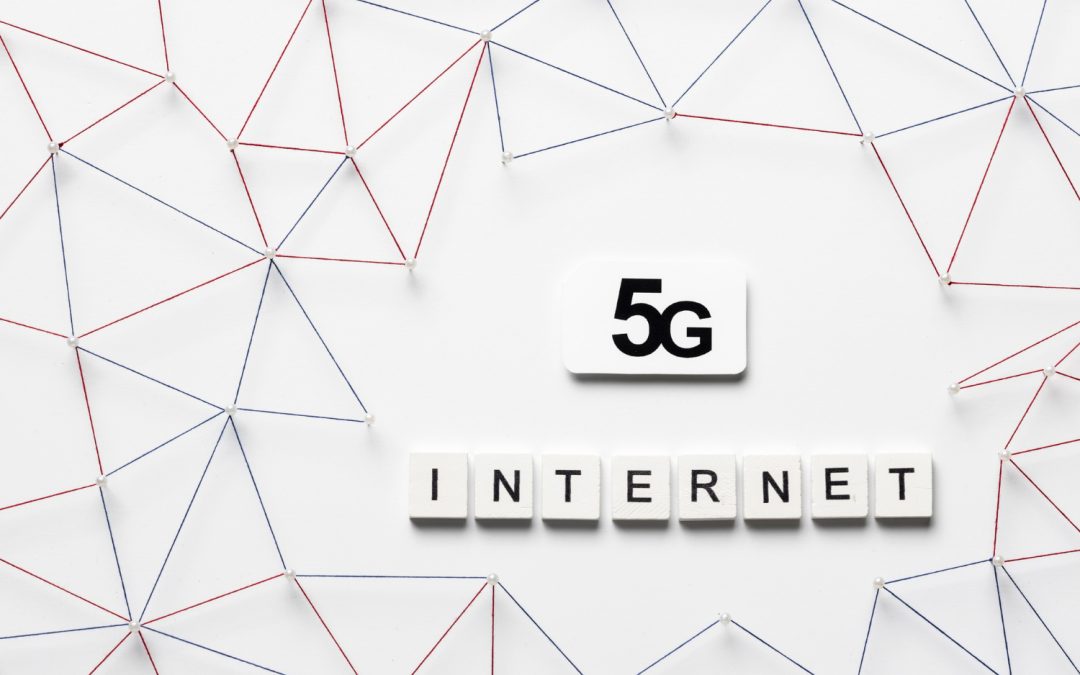In an increasingly digitized world, the quest for faster and more reliable Internet connections has become a priority for many households in Ontario. But what if I told you there’s a revolution on the horizon that will change the way you experience connectivity at home? Yes, we’re talking about 5G Internet for home, an innovative technology that promises to take network speed and stability to a whole new level.
What is 5G home Internet?
5G Internet for home is the fifth-generation (5G) technology specifically adapted for use in residential environments. Unlike traditional broadband connections, 5G leverages higher frequencies and a more advanced network infrastructure to deliver ultra-fast internet speeds and more reliable connectivity.
In other words, 5G being the fifth generation of wireless data networks, represents a significant improvement in mobile communications and phone speed. It uses different radio frequencies to provide faster data speeds and lower latency than 4G.
Is 5G the same as 5GHz?
No, 5G and 5GHz are not the same thing. A common mistake is to notice the “5GHz” setting on your WiFi router and assume you have access to 5G. But don’t worry, here you have an explanation of each one:
5G: Refers to the fifth generation of mobile technology, known as 5G. This technology provides significantly faster internet connection speeds than previous generations, such as 4G. 5G has the potential to revolutionize connectivity, enabling much faster download and upload speeds, lower latency, and the ability to connect a larger number of devices simultaneously.
5GHz: Is a frequency band used for Wi-Fi. Modern routers and Wi-Fi devices support multiple frequency bands, including 2.4GHz and 5GHz. The 5GHz band offers faster connection speeds and less interference than the 2.4GHz band. However, the 5GHz signal tends to have a more limited range compared to 2.4GHz. When referring to 5GHz in the context of Wi-Fi, it pertains to the frequency band used for wireless data transmission in local networks, such as home and business networks.
So, while residential 5G internet refers to fifth-generation mobile technology for providing internet connectivity, 5GHz refers to a frequency band used for Wi-Fi in local networks.
What is the difference between 5G home internet and cable internet?
5G home internet and cable internet are two distinct technologies for providing high-speed internet access, each with its own set of characteristics and advantages. Here’s a breakdown of their differences:
1. Technology:
- Cable Internet: Cable internet relies on a physical coaxial cable infrastructure to deliver internet service to homes. It typically uses a hybrid fiber-coaxial (HFC) network, where fiber optic cables connect to neighborhood nodes, and coaxial cables then distribute the signal to individual homes.
- 5G Home Internet: On the other hand, utilizes wireless cellular technology, specifically the 5th generation (5G) of cellular networks. It delivers internet service wirelessly through radio waves transmitted by nearby 5G cell towers.
2. Speed and Bandwidth:
- Cable Internet: Cable internet traditionally offers high-speed internet access, with speeds varying depending on the plan and infrastructure in a particular area. It’s known for its relatively stable speeds and consistent performance.
- 5G Home Internet: 5G home internet promises extremely high-speed internet access, potentially even faster than cable in some cases. Theoretically, 5G networks can offer multi-gigabit speeds, although actual speeds may vary based on factors like network congestion, distance from cell towers, and local interference.
3. Latency:
- Cable Internet: Cable internet typically has lower latency compared to traditional DSL internet but might have higher latency compared to 5G residential internet. Latency refers to the time it takes for data to travel from the source to the destination.
- 5G Home Internet: 5G technology boasts significantly lower latency compared to cable internet. This low latency is one of the key advantages of 5G networks, making them suitable for applications requiring real-time responsiveness, such as online gaming and video conferencing.
4. Infrastructure:
- Cable Internet: Cable internet requires a physical infrastructure of coaxial cables laid out in neighborhoods and communities. The availability and quality of cable internet depend on the existing cable infrastructure in a particular area.
- 5G Home Internet: 5G home internet relies on a network of 5G cell towers to transmit signals wirelessly to homes equipped with compatible receivers. This infrastructure requires a deployment of 5G cell towers, which may take time to establish in all regions.
5. Availability:
- Cable Internet: Cable internet is widely available in many urban and suburban areas where cable infrastructure has been installed.
- 5G Home Internet: 5G home internet is gradually becoming available in select urban areas where 5G network infrastructure has been deployed. However, its availability may be limited compared to cable internet, especially in rural or remote areas.
Therefore, while both cable internet and 5G home internet offer high-speed internet access, they differ in their underlying technologies, speed potential, latency, infrastructure requirements, and availability. The choice between the two may depend on factors such as location, desired speed, and individual preferences.
In conclusion, 5G home Internet represents an exciting step forward in the evolution of home connectivity. With ultra-fast speeds, low latency, and increased availability, this technology has the potential to transform the way we live, work, and entertain ourselves in Ontario.
